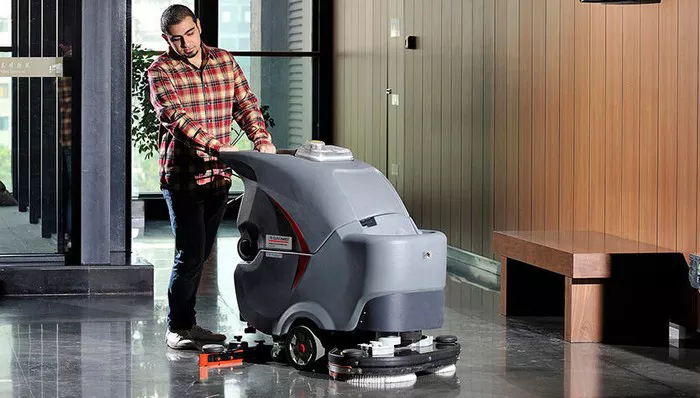Maintaining cleaning equipment is crucial for achieving optimal cleaning performance, extending the lifespan of the equipment, and ensuring safety and hygiene. Regular maintenance ensures that tools and machines operate efficiently, reducing the risk of breakdowns and costly repairs. Moreover, well-maintained equipment is essential for maintaining high standards of cleanliness and hygiene, crucial in both residential and commercial settings. This guide will provide detailed instructions on daily, weekly, and deep cleaning maintenance practices to help users keep their cleaning equipment in top condition.
Daily Maintenance Practices
General Cleaning
Daily maintenance begins with general cleaning practices, which are fundamental to keeping equipment in good working order. This includes:
Rinsing and Washing Mops, Cloths, and Sponges: After each use, rinse mops, cloths, and sponges thoroughly to remove dirt and cleaning solutions. This prevents the buildup of residue that can degrade the materials and reduce their effectiveness.
Emptying Buckets and Vacuum Cleaner Dustbins: Always empty buckets after use to prevent the growth of bacteria and mold. For vacuum cleaners, empty the dustbins and remove any debris from the brushes and hoses to maintain suction power.
Wiping Down Surfaces of Equipment: Use a damp cloth to wipe down the exterior surfaces of equipment such as vacuum cleaners, mop handles, and buckets. This removes dust and grime that can cause wear and tear over time.
Specific Equipment Maintenance
Different types of cleaning equipment require specific maintenance practices to ensure their longevity and efficiency.
Vacuum Cleaners: Regularly empty the dustbins or replace vacuum bags to maintain suction power. Check filters and clean or replace them as per the manufacturer’s instructions to ensure optimal air quality and prevent motor strain.
Mops and Buckets: Rinse mop heads thoroughly with water and appropriate detergents. Machine-wash removable mop heads if possible, and air-dry them to prevent mildew. Clean and dry buckets after each use to avoid bacterial growth.
Brooms and Dusters: Shake out loose dirt from brooms and dusters after each use. Wash them when they become visibly soiled, and allow them to air dry completely.
Microfiber Cloths: Wash microfiber cloths in hot water without fabric softeners to maintain their electrostatic properties. Air-dry them to retain their shape and effectiveness.
See also: Tips & Tricks: Does a Steam Mop Really Clean Floors?
Storage
Proper storage of cleaning equipment is essential to prevent damage and maintain organization.
Designated Storage Areas: Store cleaning tools in designated areas to avoid tripping hazards and clutter. This also ensures that equipment is easily accessible and in good condition when needed.
Hanging Mops and Brooms: Hang mops and brooms to air dry completely. This prevents the growth of mold and bacteria and extends the lifespan of the equipment.
Safe Chemical Storage: Store cleaning chemicals in a secure area, away from children and pets. Ensure that chemicals are properly labeled and that incompatible substances are kept apart to prevent dangerous reactions.
Weekly Maintenance Practices
In addition to daily practices, weekly maintenance is essential for ensuring the smooth operation of cleaning equipment.
Lubrication
Apply lubricant to the moving parts of equipment, such as vacuum cleaner attachments, as per the manufacturer’s recommendations. Lubrication ensures smooth operation and prevents wear and tear on mechanical components.
Visual Inspection
Perform a visual inspection of all cleaning equipment to check for signs of damage, wear, or loose parts. Tighten screws or bolts as needed and replace any worn or damaged components to prevent equipment failure and ensure safety.
Deep Cleaning and Scheduled Maintenance
Deep cleaning and scheduled maintenance are critical for maintaining the performance and longevity of more complex cleaning equipment.
Following Manufacturer’s Recommendations
Adhere to the manufacturer’s recommendations for deep cleaning procedures. For example, vacuum cleaner filters should be cleaned or replaced according to the specified schedule to maintain suction power and air quality. Ignoring these guidelines can lead to decreased performance and potential damage to the equipment.
Professional Maintenance for Complex Equipment
For more complex equipment, such as floor scrubbers and carpet cleaners, scheduled professional maintenance is essential. Regular servicing by trained technicians can identify and address potential issues before they lead to significant problems, ensuring that the equipment remains in optimal working condition.
See also: The Ultimate Guide to Choosing the Best Scrubber for You
Conclusion
Proper maintenance of cleaning equipment is vital for achieving the best cleaning results, extending the lifespan of the equipment, and ensuring safety and hygiene. By implementing daily, weekly, and deep cleaning maintenance practices, users can maintain their tools and machines in excellent condition. A proactive approach to equipment maintenance not only enhances cleaning efficiency but also reduces costs associated with repairs and replacements. In summary, regular and thorough maintenance is the key to a clean, safe, and cost-effective cleaning routine.

